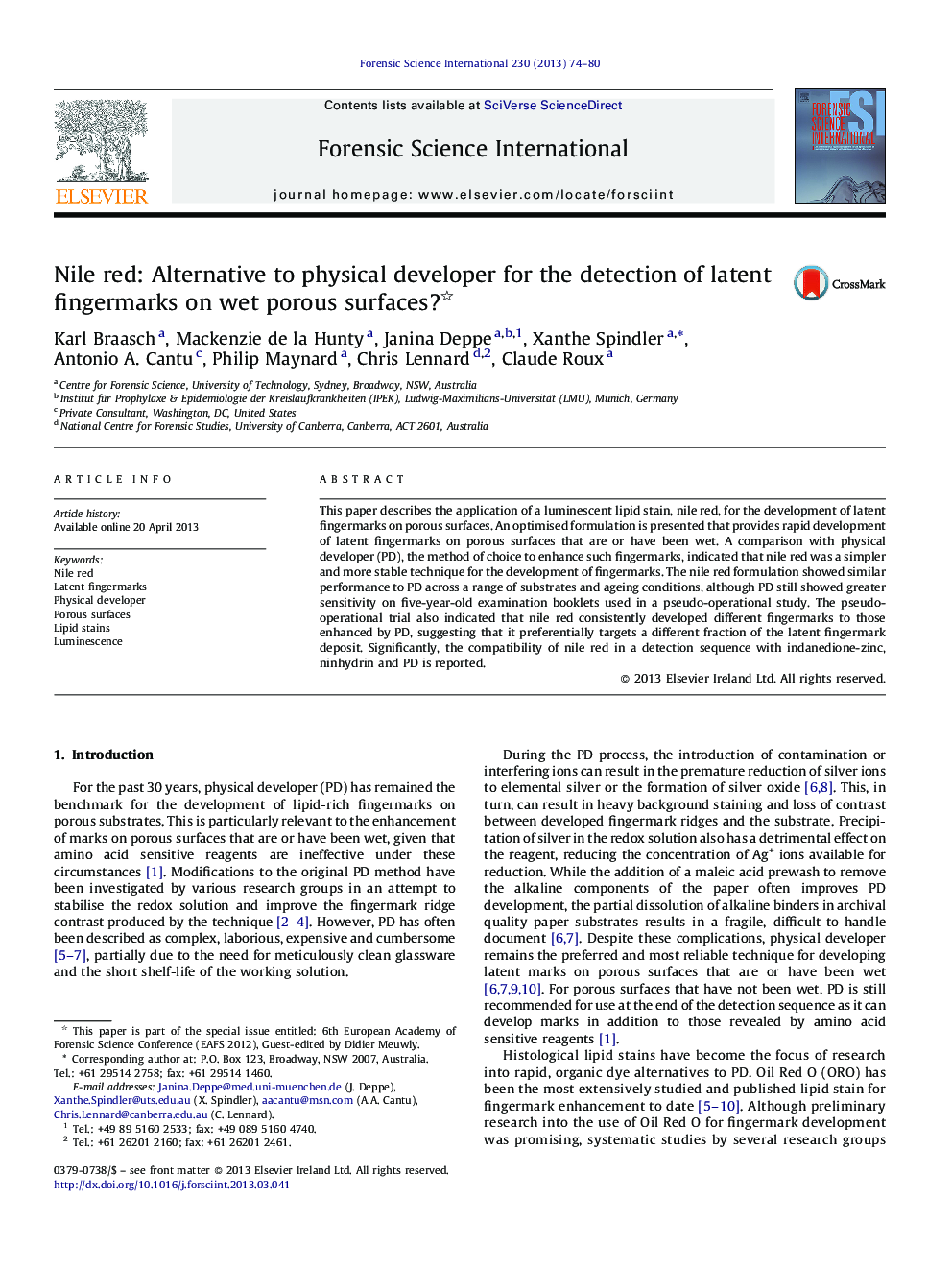| Article ID | Journal | Published Year | Pages | File Type |
|---|---|---|---|---|
| 95998 | Forensic Science International | 2013 | 7 Pages |
This paper describes the application of a luminescent lipid stain, nile red, for the development of latent fingermarks on porous surfaces. An optimised formulation is presented that provides rapid development of latent fingermarks on porous surfaces that are or have been wet. A comparison with physical developer (PD), the method of choice to enhance such fingermarks, indicated that nile red was a simpler and more stable technique for the development of fingermarks. The nile red formulation showed similar performance to PD across a range of substrates and ageing conditions, although PD still showed greater sensitivity on five-year-old examination booklets used in a pseudo-operational study. The pseudo-operational trial also indicated that nile red consistently developed different fingermarks to those enhanced by PD, suggesting that it preferentially targets a different fraction of the latent fingermark deposit. Significantly, the compatibility of nile red in a detection sequence with indanedione-zinc, ninhydrin and PD is reported.
